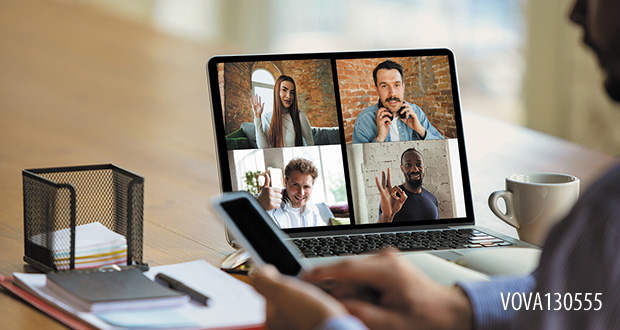
Lately, most meetings are held via some form of videoconferencing platform — Zoom, Teams, Webex, etc. Those of us who use that medium throughout the day know that “Zoom fatigue” is a real thing.
According to a Ted.com article by Sander & Bauman, meeting online causes fatigue because it actually increases our cognitive load. We need to work harder during an online meeting to process non-verbal cues such as facial expressions, fidgeting and distance, for example — all of which are processed subconsciously during in-person interactions.
Online meetings also may cause stress because there are extra concerns. We have to control our screen presence (how do I look on camera?), control our background (hoping the kids, pets, others do not show on screen), and feel confident that there will not be any technological snafus.
While some stresses may be added when meetings are held online, others may be alleviated, such as for those who may be self-conscious or who simply dread in-person meetings.
Certainly, there are benefits as well, not the least of which is the ability to collaborate without the requirement of being physically together. Online meetings also make it easier to multi-task. We can easily log into a meeting and simultaneously continue checking our email or phone apps.
While multi-tasking may seem like a benefit to online meetings, however, there is also a downside to this. As we are not getting up from our workspace and walking to a meeting room or office, there is no physical or mental delineation between “work” and “meeting” modes.
And by now, most of us can tell when someone on a video call is not “present.” A blank stare at the camera or strategically placed phone outside of the camera’s view can be revealing.
It is quite possible that Zoom fatigue has impacted how (and whether) we are really listening to each other these days, but we cannot discount the importance of doing so, perhaps now more than ever. Because we do not have the benefit of the many non-verbal cues we would otherwise observe, it behooves us to listen to each other carefully.
Active listening is not only polite, it is one of the best techniques we can use — even remotely — to build and strengthen our personal and professional relationships.
The process generally includes three steps: (1) showing with your body language (eye contact, head nodding, facial expressions) that you are engaged in the conversation; (2) reiterating back to the speaker one or more of the points that was made; (3) asking open-ended questions.
By now, most of us can tell when someone on a video call is not “present.” A blank stare at the camera or strategically placed phone outside of the camera’s view can be revealing.
While effective active listening takes some practice to master, the benefits can be great. Not only will you build trust with the speaker, you will make that person feel valued by having taken the time to genuinely participate.
Active listening also promotes healthy dialogue and can ensure clear understanding of thoughts, projects and common goals.
During a time when important tethers to our personal and professional lives are being developed through online media, active listening might be one of the best skills we can teach ourselves right now. (And it’s effective for in-person meetings, too!)
Karen S. Borofsky has been director of administration at Lando & Anastasi in Boston since 2003. She has more than 30 years of experience working in Boston area law firms.
 New England Biz Law Update
New England Biz Law Update
